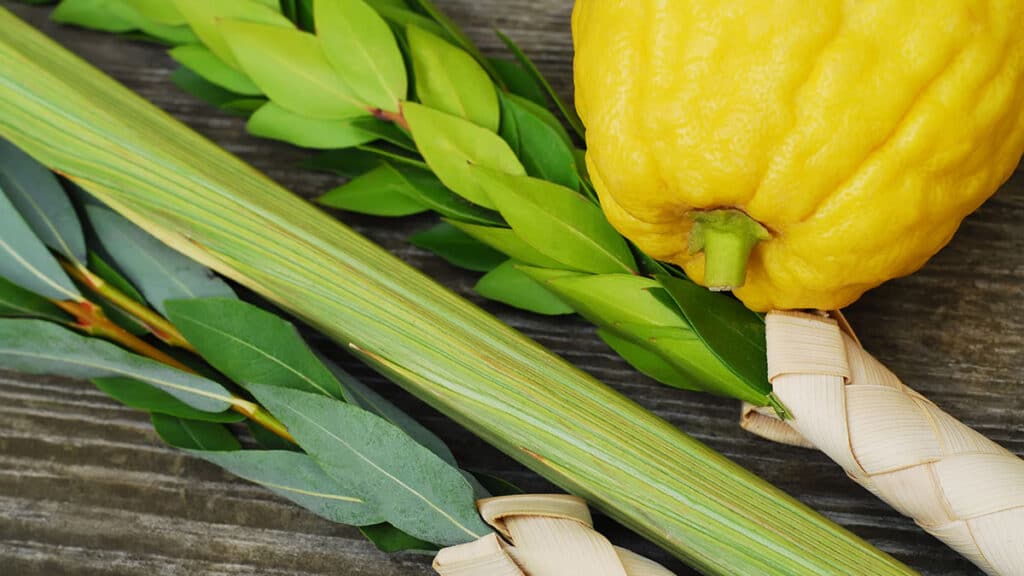
Sukkot is the Jewish fruit harvest festival that commemorates The Exodus, and reconnects us with nature. It is also known as the Feast of Tabernacles or Feast of Booths because tradition requires the building of a temporary farmworker’s hut. It celebrates the end of Israel’s fruit harvest.
Chag Sameach!
“Chag Sameach!” means Happy Holiday.
Sukkot 2025
Sukkot, the Jewish fruit harvest festival, is sundown, Monday, October 6-13, 2025. ✡️
What Does it Mean?
“Sukkot” means “booths” or “huts” in Hebrew. Many Jewish festivals are about remembering our history. Sukkot commemorates 40 years of wandering in the desert.
It is one of the Shalosh Regalim, the three pilgrimage festivals: Passover (Pesach), Feast of Weeks (Shavuot), and Feast of Booths (Sukkot); when those who can should make a pilgrimage to the Temple of Jerusalem.
Jewish holidays are based on the Hebrew calendar. Sukkot is celebrated five days after Yom Kippur, the day of atonement that marks the end of the High Holidays of the Jewish new year.
An important tradition is to build and even live in a “sukkah” or hut during the festival. These are three-sided temporary huts with leafy roofs that are somewhere between a tent and a patio shelter. It’s Jewish camping. This helps us remember how our Jewish forefathers lived and worshiped while wandering the desert during the Exodus. “Sukkot” is plural for huts or tabernacles.
We decorate our sukkah with symbols of the harvest and use them during prayers. These are lulav, a bouquet of palm, willow and myrtle branches bound by a woven palm branch. The etrog or citron is a citrus fruit similar to a lemon.
There are specific prayers and ways to recite the prayers. Each day recalls a forefather of the Jewish people. It is a time to be joyful. It’s a time of welcoming all guests with hospitality.
Sukkot traditions give thanks for the harvest, but more than anything, they bring us together as family. Family is our strength.
